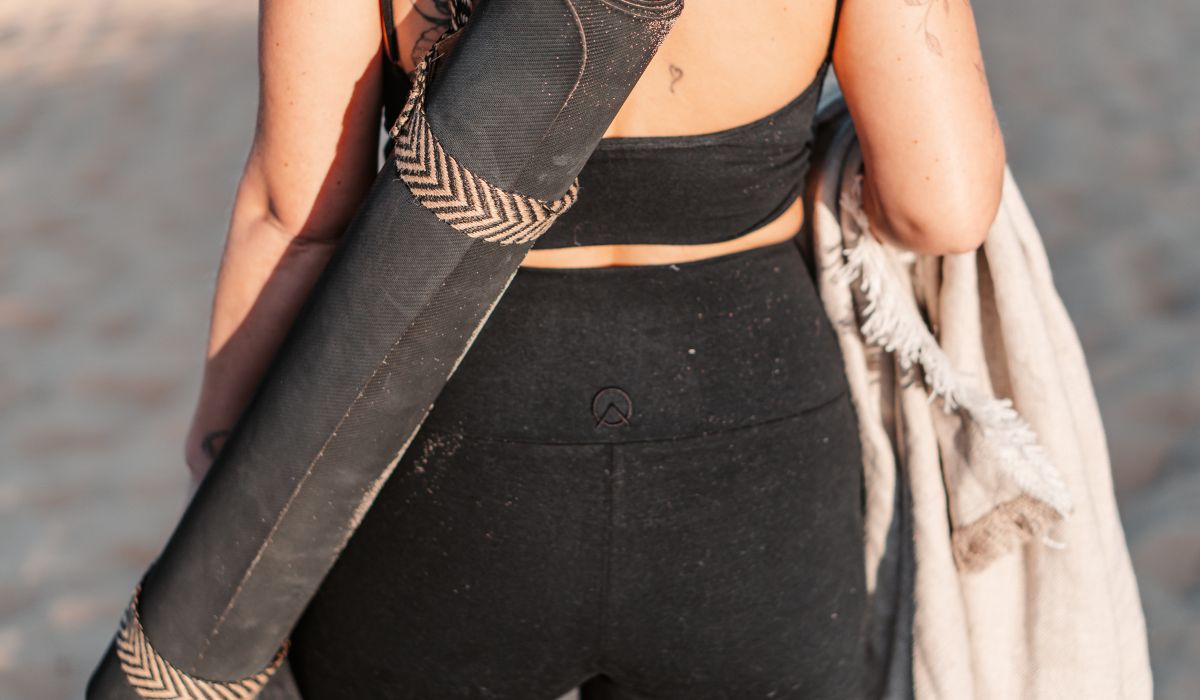At ZONE, our mission is to help you #livebetter through our environmentally conscious products and our passion for yoga, wellness and life. Yoga provides us with so many holistic benefits and we want to ensure that the products we make are from sustainable materials and of premium quality.
Can yoga accidentally hurt the earth?
Most yoga journeys begin with the asanas (physical practice) but over time many students of yoga will begin to unlock the philosophies and ancient teachings to understand the energetic relationship and connectedness of all beings. Yogi’s who follow the path of the Eight Limbs of Yoga and the observance of Ahimsa (non-harming) learn to extend their values not just to themselves and others, but also to Mother Earth and the environment in which we live. Yoga helps many people become aware of their footprint on the earth, however, the rise in the consumerism of yoga has created unforeseen harm to our planet, which goes against our core beliefs here at ZONE.
Imagine your daily yoga practice; you put on your new yoga tights, grab a bottle of water from the studio, roll out your mat and enjoy class in a heated studio. Most yogis don’t want to harm the earth, however unbeknownst to many, the rituals of modern-day yoga contribute to a negative ripple effect. When you consider the impacts of a fast fashion society, energy expenditure, single use plastic and PVC yoga mats, we realise that the $90billion yoga industry is in fact having harmful consequences the environment.
ZONE was created to help us practice yoga in a more conscious and eco-friendly way by creating durable and sustainable products that that serve people and planet.

“Can yoga inspire conscious, peaceful, environmental stewardship for the betterment of society and the Earth?”
- Russell Comstock
We believe that it CAN and that is why at ZONE, 100% sustainable cork is our material of choice for our massage balls, blocks and yoga mats. Our mat also includes natural rubber on one side which is adhered by heat, without the use of toxic glues.
Why is cork so sustainable?
The cork tree or (Quercus suber) is the only type of tree that can have its bark removed without damaging the tree. In fact, cork trees actually grow new protective layers when the bark is removed, which makes it stronger and able to absorb even more carbon dioxide after harvesting! Each year cork oak forests are estimated to retain around 14 million tonnes of carbon dioxide. This is a huge tick for the environment, and this is why it is considered one of the most sustainable forestry production practices in the world.
Cork trees can also store a large amount of water in their roots, which helps keep them hardy and prevent soil erosion where they are planted. This storage of water also means that they can absorb nutrients from deep in the earth and sustain themselves without human interaction, even in quite dry climates.
Ok, so cork is a sustainable material but will it help my practice?
The other reason that we’ve chosen cork is because it has so many natural properties that make it perfect for practising yoga. One of the main reasons for why we use cork for our yoga products is that gets grippier the more you sweat. Cork contains a substance called suberin, which has a waxy, rubbery texture and is released with moisture. You won’t notice the suberin on the mat, it’s an indistinguishable substance that repels water, so when moisture hits the cork (like sweaty hands in yoga) it actually creates extra grip, when you need it most. We recommend using our yoga mat spray made with our signature Australian Essential oils to lightly moisten your mat before practicing and initiate the suberin for the ultimate non slip experience.

This suberin is also antibacterial, so the yoga products are hygienic and easy to clean, especially compared to foam or PVC. Extensive testing has been done on cork products to ensure that it is antimicrobial which means that it suppresses the growth of micro-organisms such as mould or bacteria.
Because most allergies are caused by particles found in mould, dust and dirt, cork products are also naturally non-allergenic, because the microbes can’t enter the cells and it doesn’t absorb dust and dirt. Yep! There’s a reason for why cork is used in our wine bottles!
And in case you need another reason to switch to a cork mat, you’ll also find them really comfortable and shock absorbent. Cork has a unique cellular structure that makes it able to easily compress and expand, so it will help with shock absorption and comfort. Particularly useful for balancing poses and also savasana!

Our cork range includes our cork yoga mat for practice, our cork yoga blocks for support and stability and cork massage balls for self massage and tension release. We want to help you cultivate an eco-friendly yoga practice and know that you will love our range of cork yoga products that are good for you and great for the earth.






